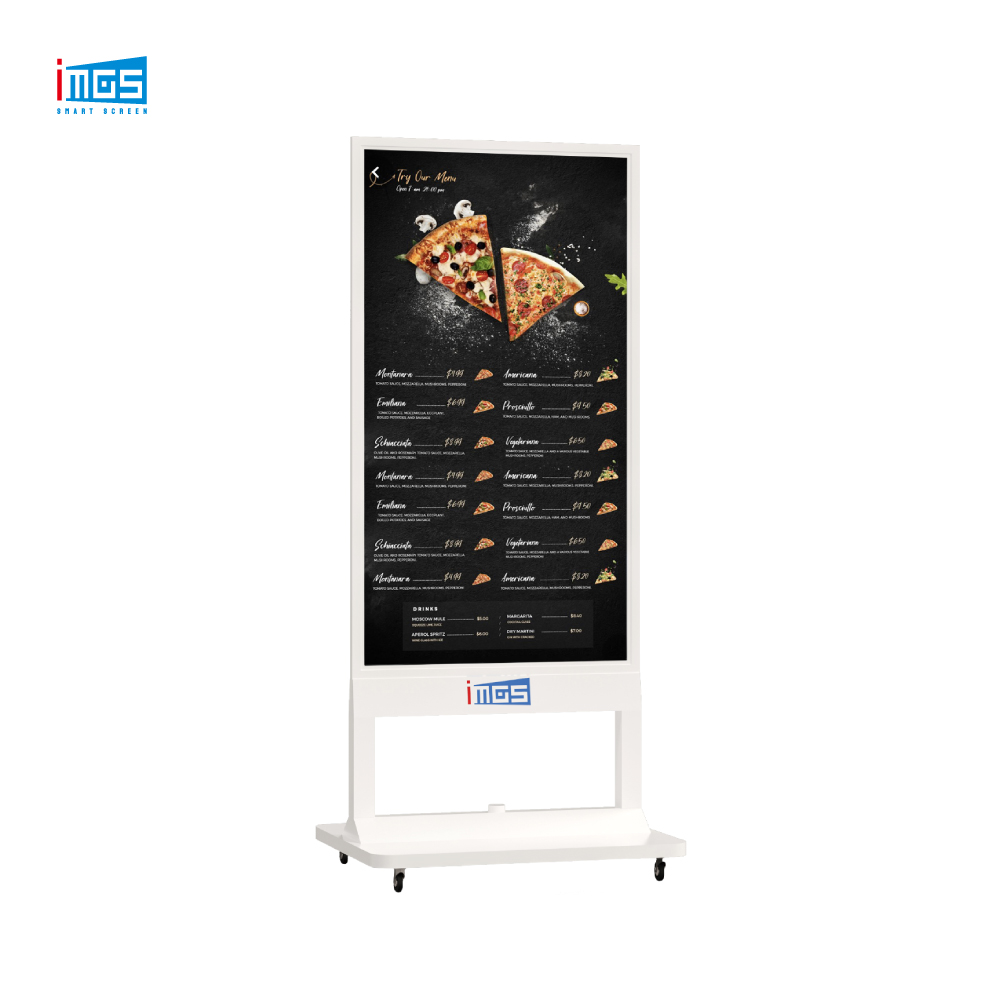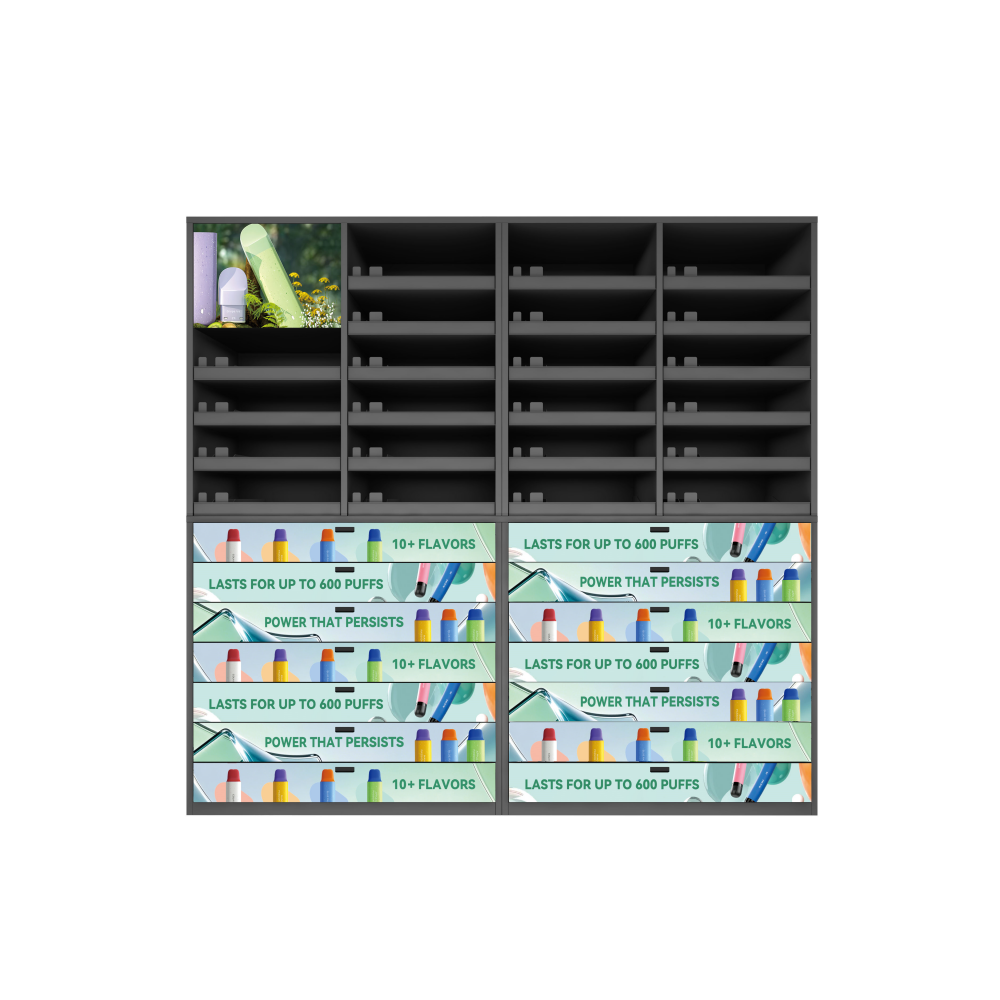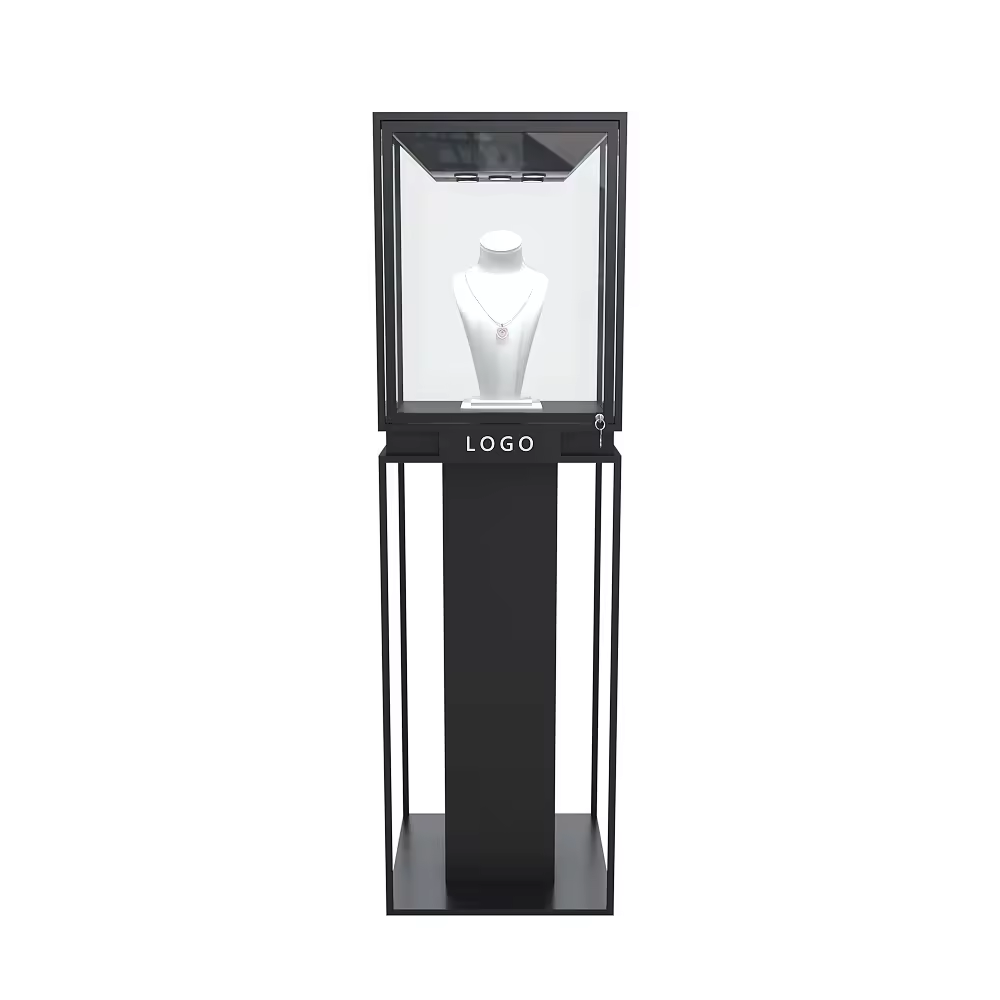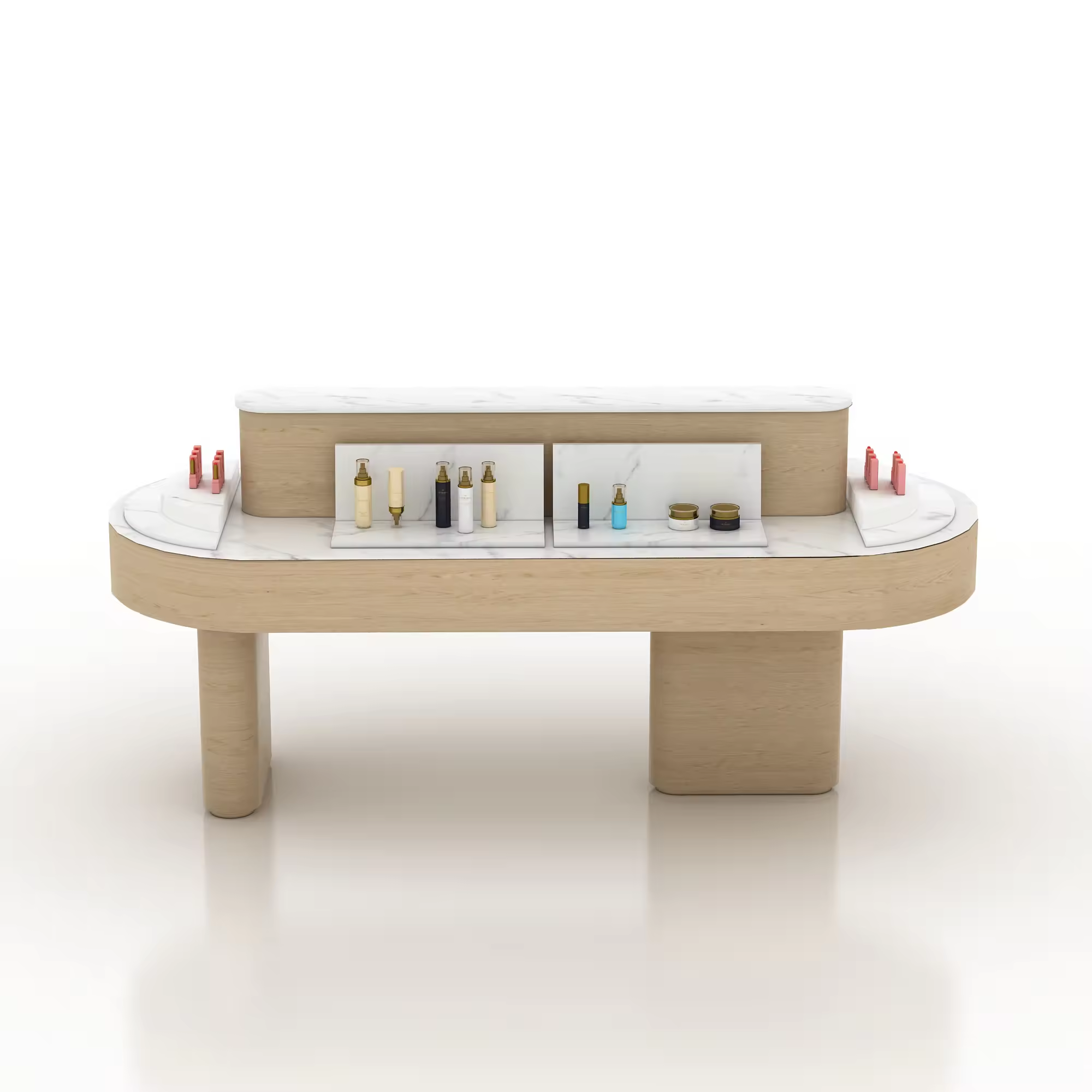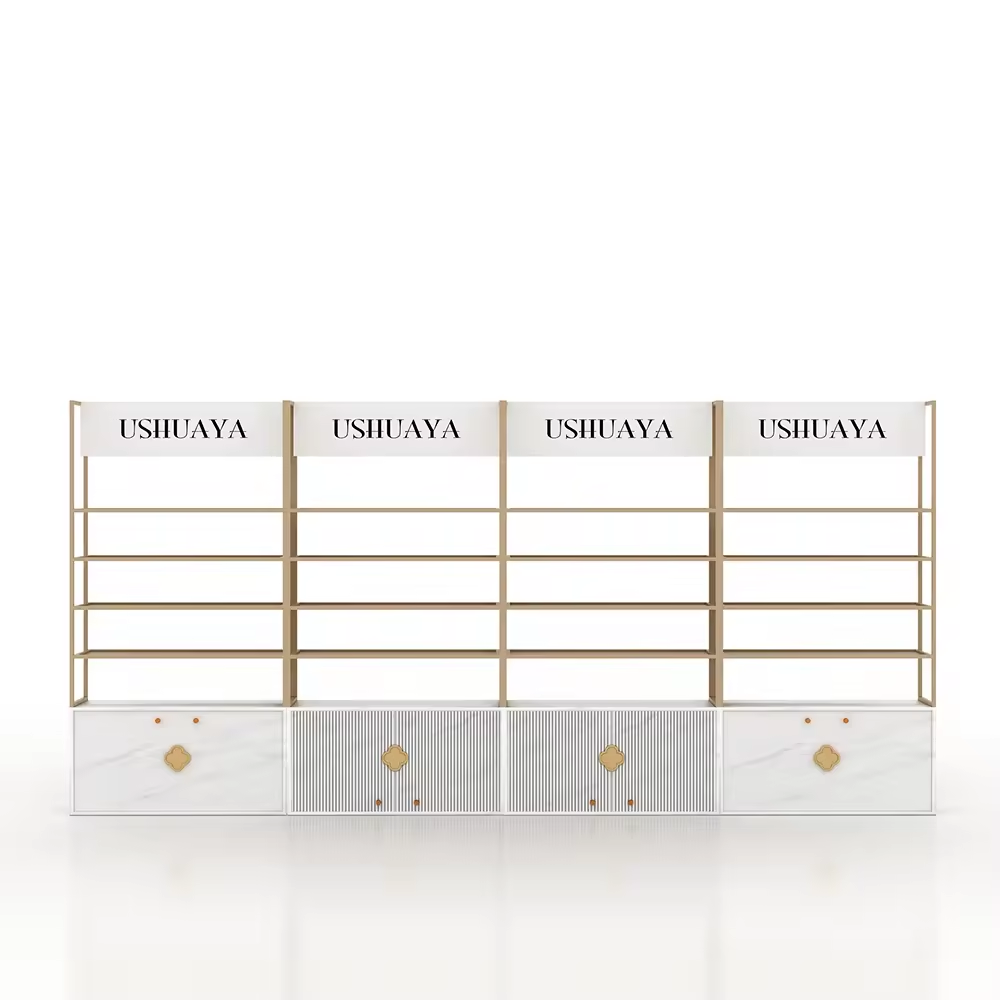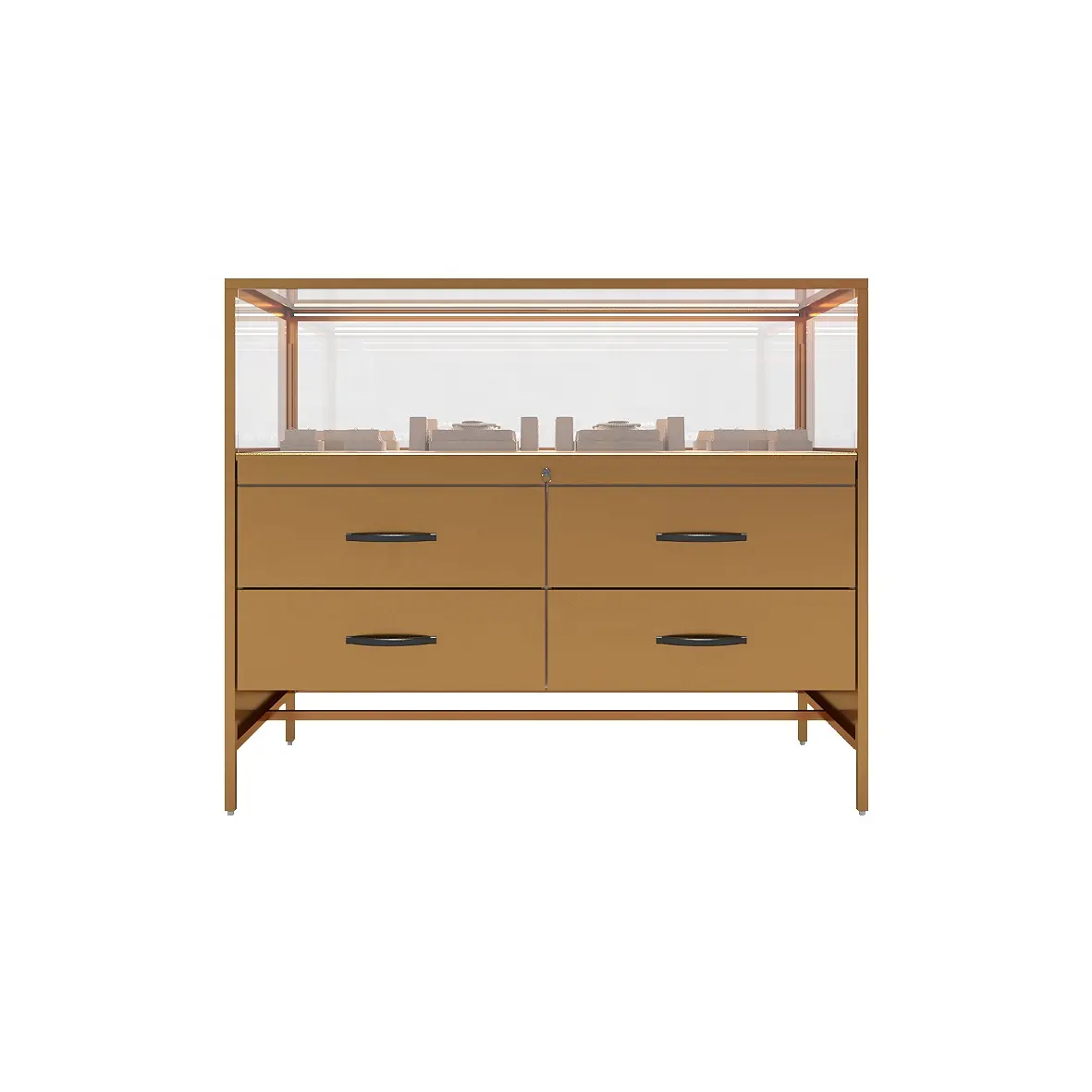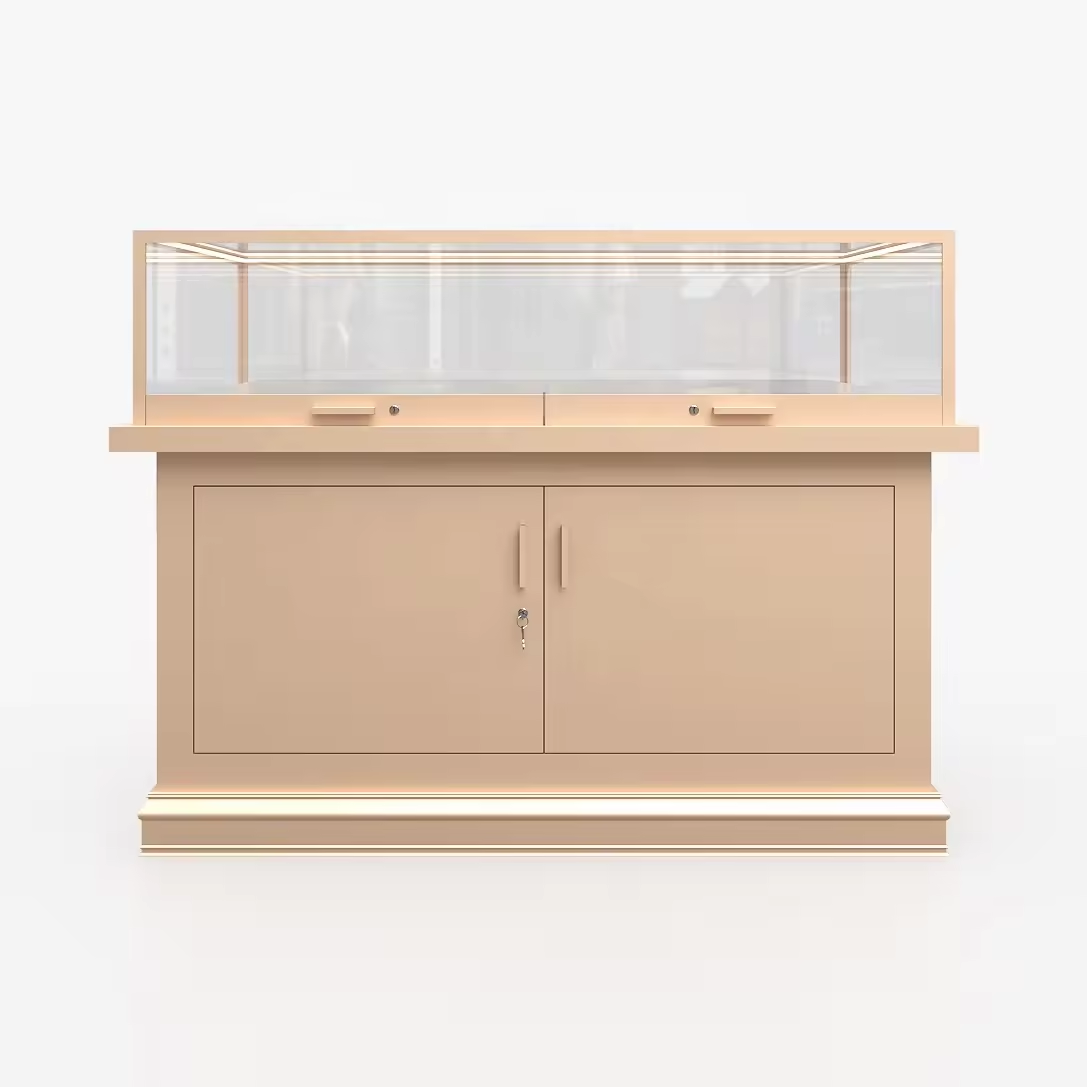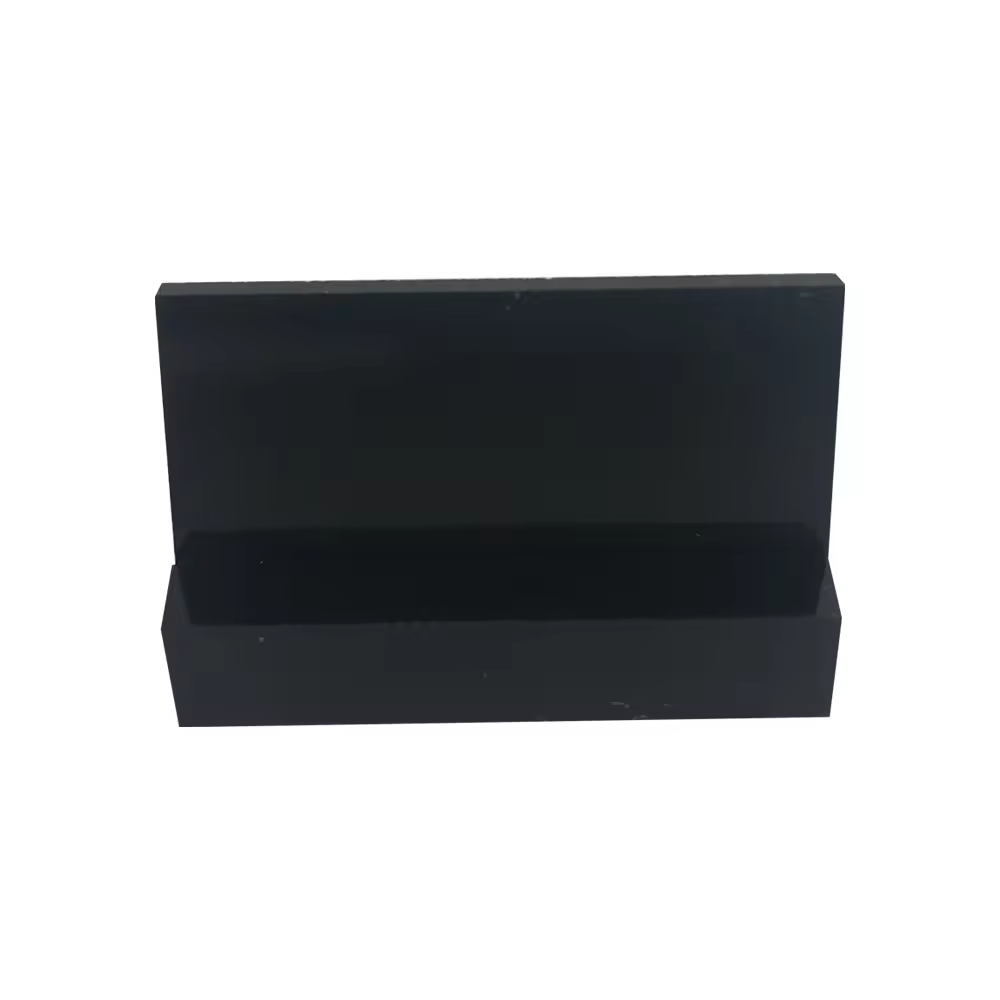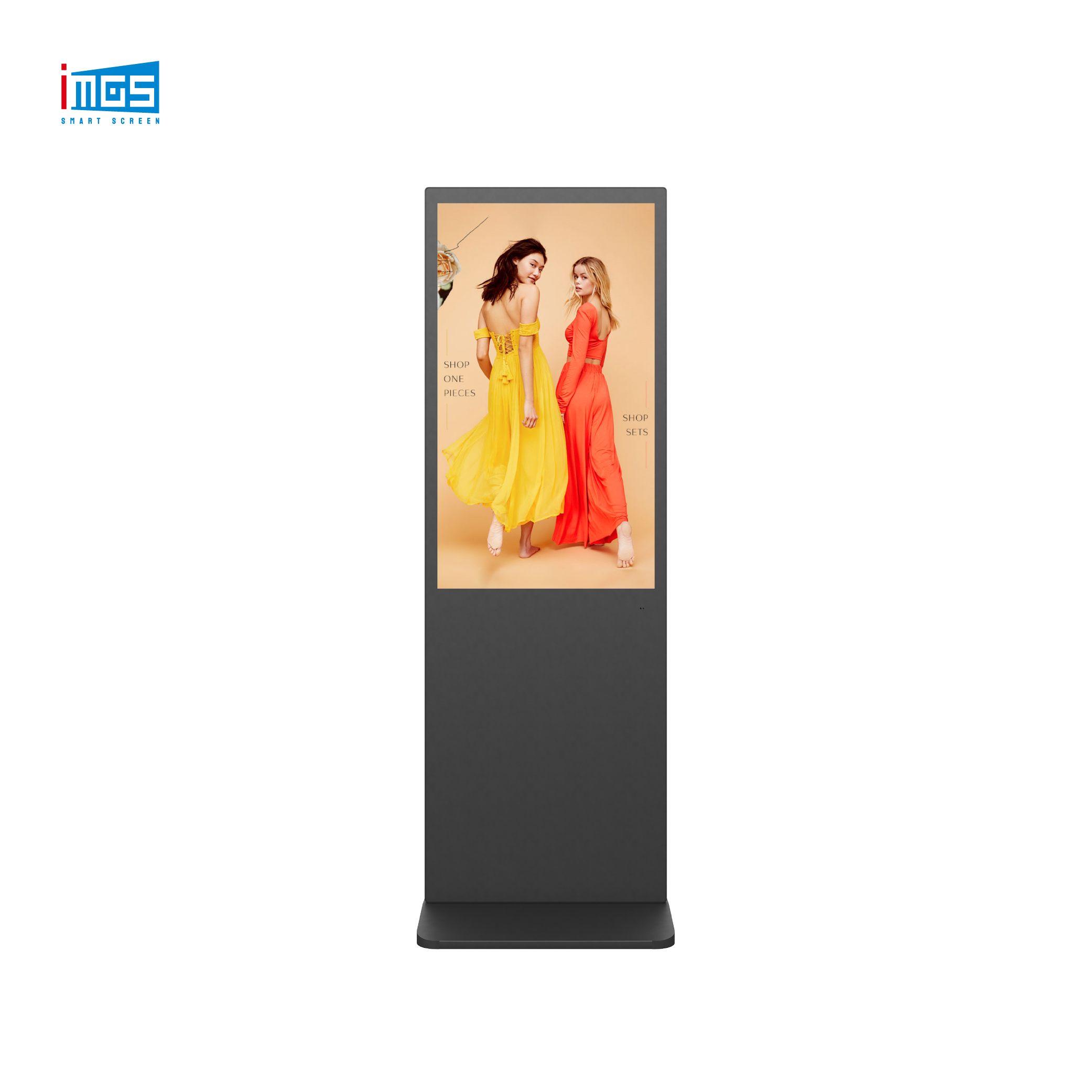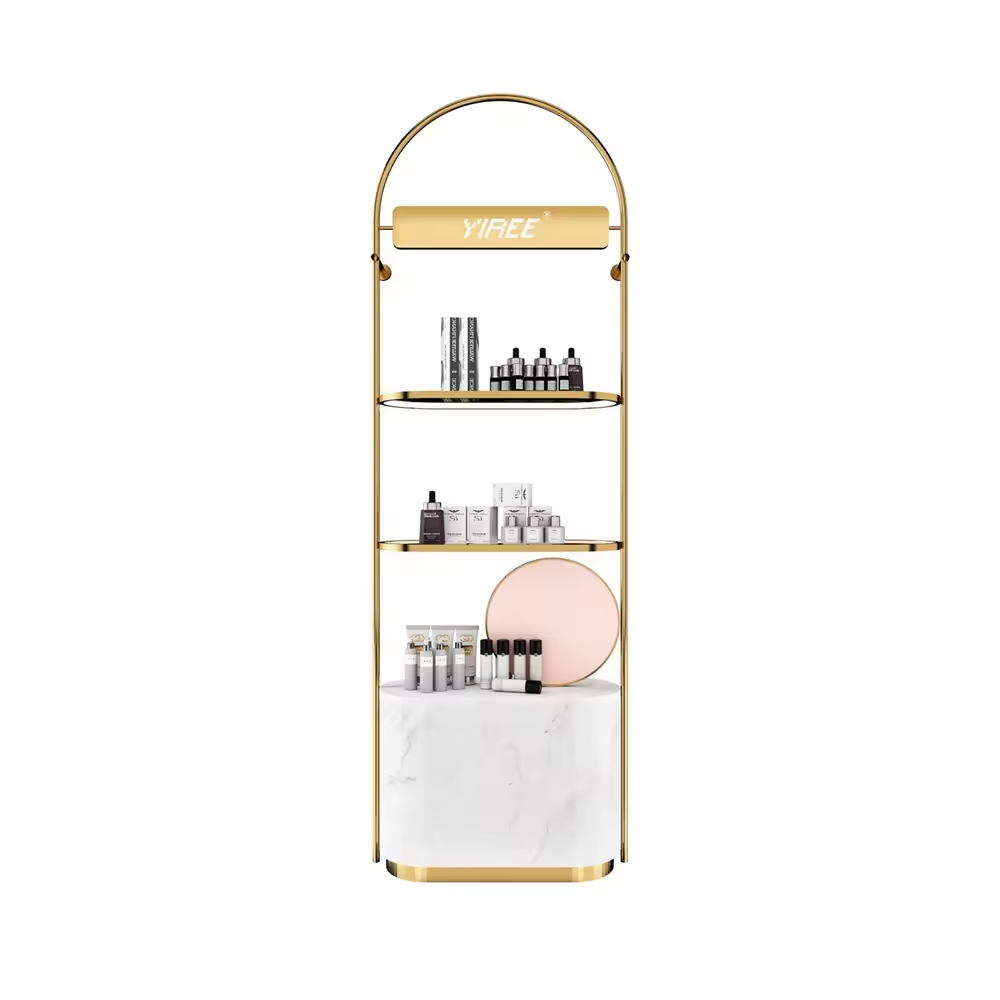Composition of the spatial hierarchy
As one of the common design terms, the creation of a sense of hierarchy is indispensable from two-dimensional flat painting and photography to three-dimensional spatial design.
In essence, the contrast between light and dark in painting, the foreground and background in photography, the relief process in sculpture, and the colour hierarchy in space, in fact, all point to the same concept, which is to shape a sense of hierarchy.
The sense of hierarchy in space is mainly reflected in the hierarchical relationship, which produces visual richness through the combination and change of elements at different levels.
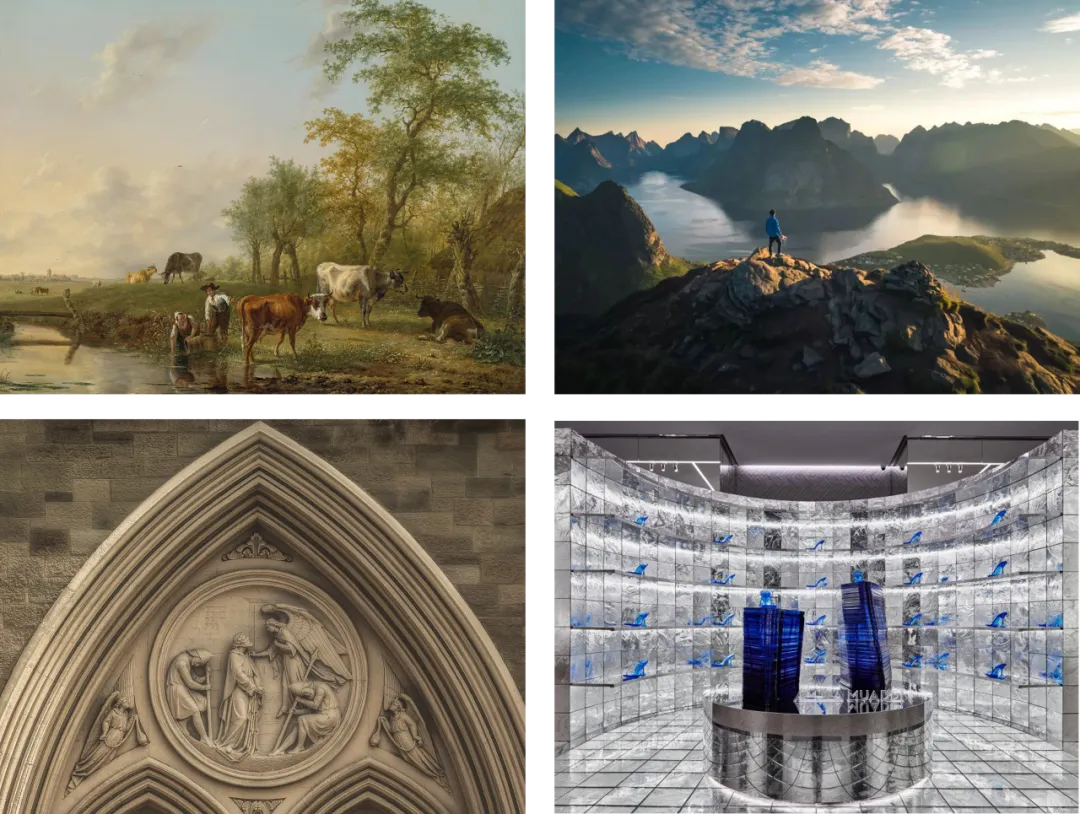
After all, when the elements in the space are the same or similar, the hierarchical relationship is relatively not easy to reflect, then you need to create differentiated elements to break this phenomenon.
There are many categories of hierarchical elements, such as display, colour, material, light and decorations, etc., which can constitute a hierarchy and, according to different rules of arrangement, eventually produce different levels.
Through the division of different layers, the spacing of the relationship between the front and back, and the adjustment of the colour light and dark, so that the user in the middle of it, can perceive a richer change, rather than the kind of empty at a glance can be seen to the end.
Creating spacing between elements
There's a line in ‘Tongue Tips of China’ that says a single flavour is difficult to present on its own, and that the best way for the five flavours to exist is to be harmonised and balanced.
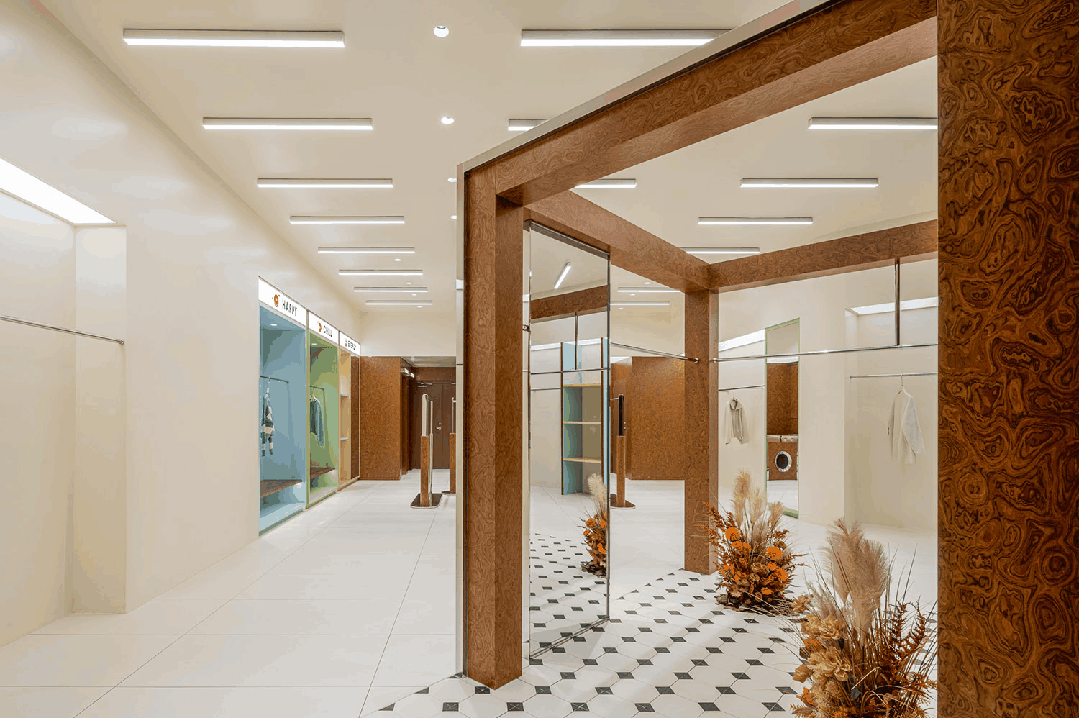
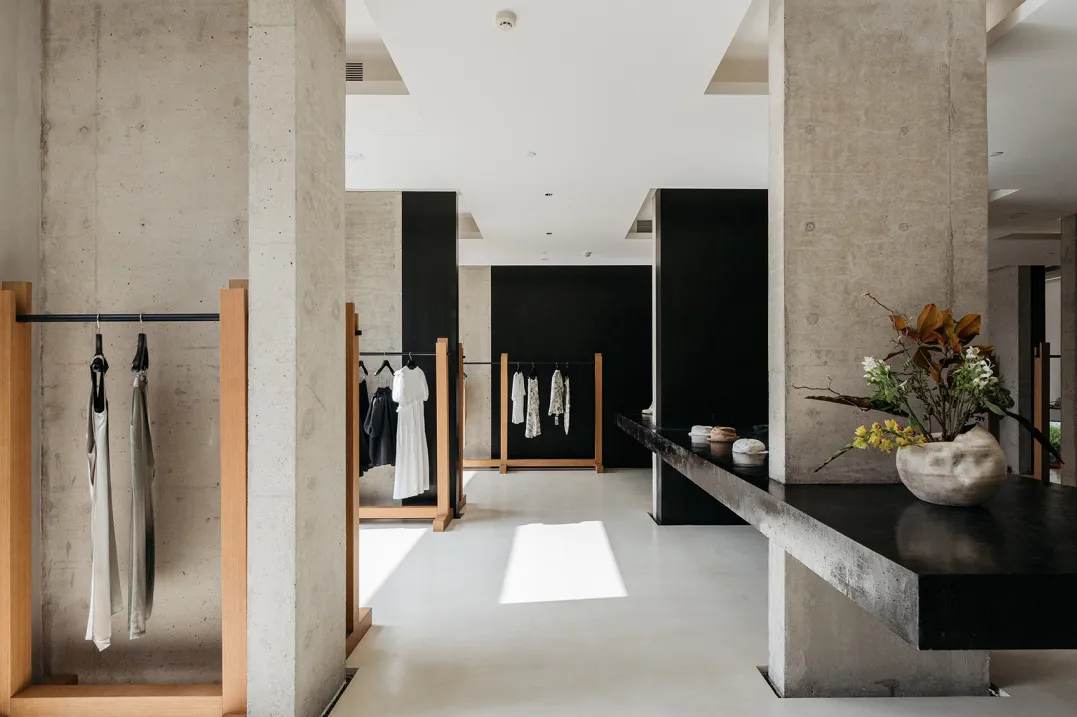
The same applies to retail design, where different ‘flavours’ are used to enrich and harmonise the space.
Layers of retail space are made up of different elements, such as size, sparseness, length, light and darkness, etc., which make the space present a sense of hierarchy, such as front and back, high and low, depth and so on.
For example, choosing colour combinations with strong contrasts between warm and cold to form a hierarchical division of colour blocks; creating layers of light and shadow through lighting design to create contrasts between reality and emptiness in the space; and using materials with different textures (e.g. timber, metal or stone) to create different texture perceptions.
In essence, all these differentiated creations are pulling apart the distance between different levels, generating a kind of interval between the front and back sequences, thus enriching the overall feeling of the space.
The small area of the shop space is compactly distributed with a variety of different materials, such as ice-patterned acrylic, art cement, coloured wood panels, mirrored stainless steel, etc. The contrast and fusion between these materials creates a rich sense of hierarchy.
Hierarchy of sequences
The sense of hierarchy in space is not that all the elements are thrown out in a brain, but that they emerge one by one, layer by layer, and are presented in a sequential and progressive manner.
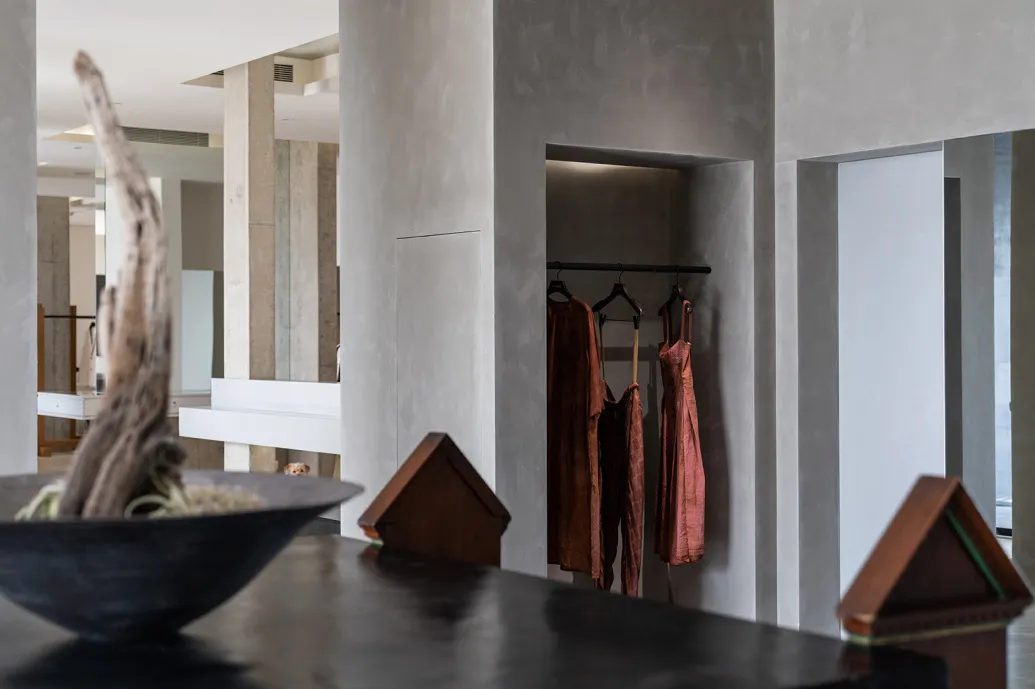
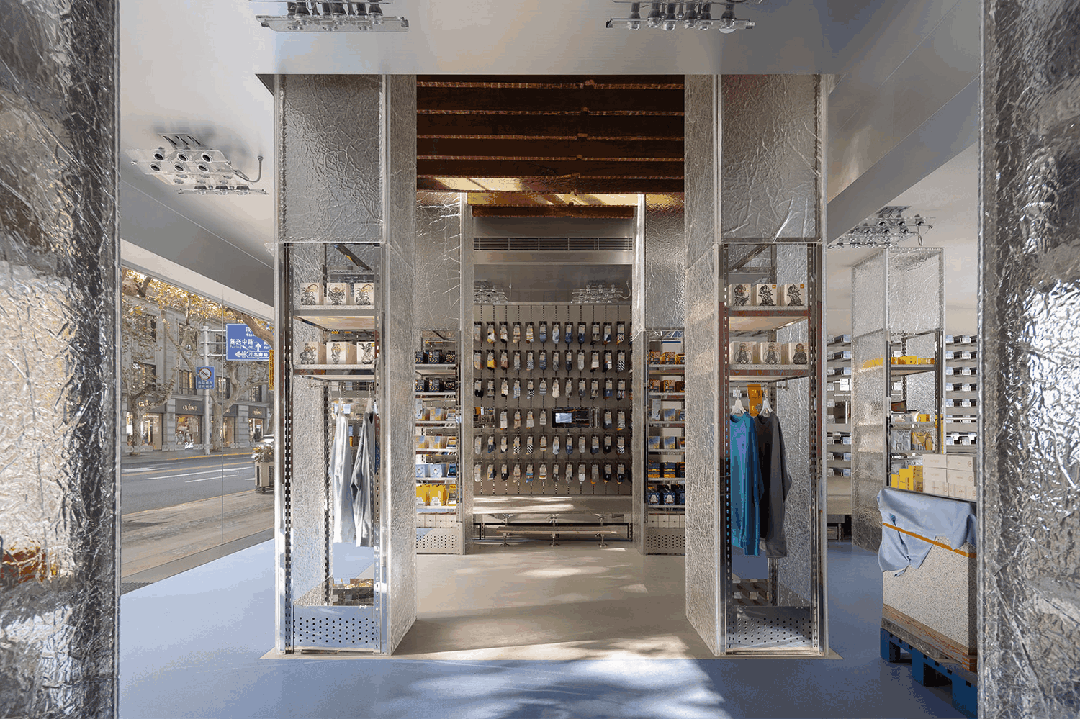
For example, in the design of the moving line, the strategy of path offset is used to offset one or more paths along the active line through the interval of screens and walls.
Or the use of small-scale shading to create a sense of depth for the path, thus generating a walking experience that is rich in feeling changes.
Another way is visual overlapping, which gives a very strong change of level by dislocating and superimposing different areas on each other.
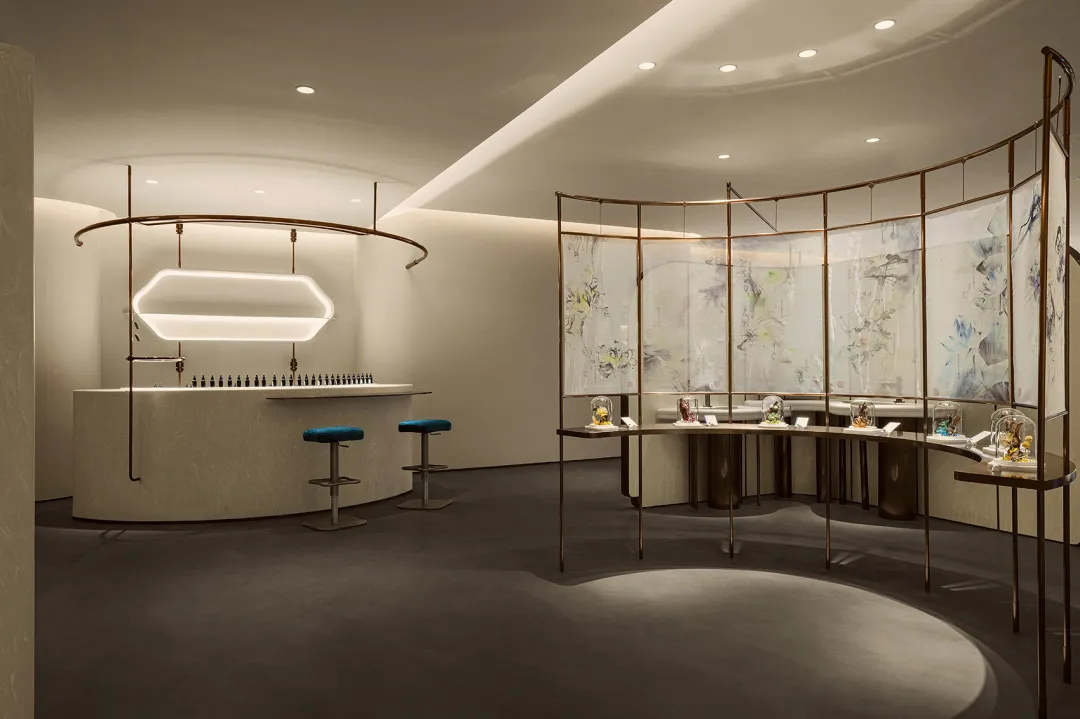
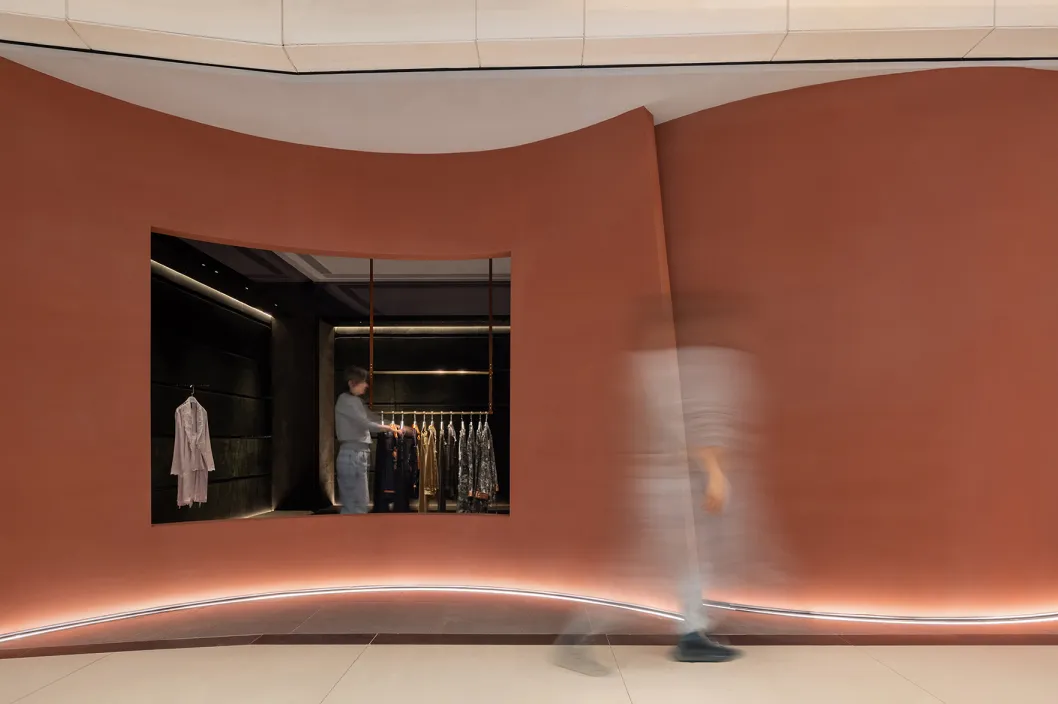
Simply put, it is two adjacent spaces, not using solid walls completely isolated, consciously make it connected to each other, then it will make these two spaces penetrate each other, thus enhancing the sense of spatial hierarchy.
This brand offline space has cleverly set up a varying number of square and round holes in the internal structure, which on the one hand can increase the richness of the space, and on the other hand produce the relationship between ‘inside’ and ‘outside’, as well as the subtle landscape of permeability.
Through these window holes, one can feel the change of light and shadow, and the fun of exploration. It is like a picture frame for the space and a frame for the eyes, adding unlimited possibilities of imagination and rich spatial layers to the space.

